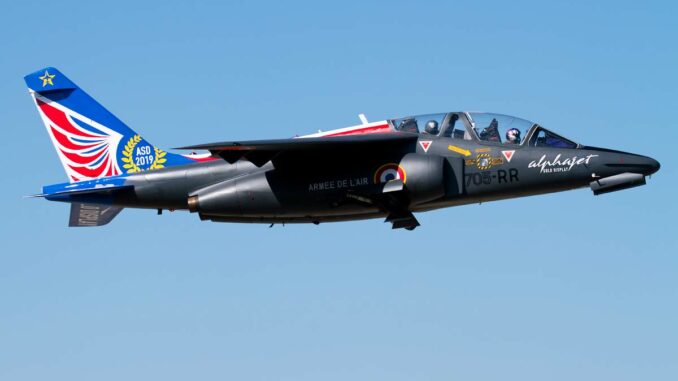
Discover the French Air Force’s training aircraft, essential for training highly qualified and versatile pilots.
Training French military pilots is a demanding and complex process, requiring a variety of specialized training aircraft. These aircraft are designed to prepare pilots for the unique challenges of air combat and air force operations. Using a range of training aircraft enables pilots to familiarize themselves with different types of maneuvers, weapon systems and tactical scenarios. By mastering skills on a variety of platforms, pilots develop the versatility crucial to modern operations. This ensures that the French Air Force remains at the cutting edge of technology and performance, ready to meet any challenge.
Training aircrafts used by France
Dassault/Dornier Alpha Jet
Socata TB-30 Epsilon
Pilatus PC-21
Extra EA-300
GroB G120A-F
Aircraft presentation
Dassault/Dornier Alpha Jet
Description: The Dassault/Dornier Alpha Jet is a light attack and trainer aircraft. In service since the 1970s, this twin-engine aircraft is renowned for its reliability and versatility. It offers an ideal training environment for future fighter pilots, thanks to its maneuverability and ability to simulate real combat scenarios. The Alpha Jet can reach a maximum speed of around 1,000 km/h, enabling pilots to get used to the high speeds characteristic of modern fighter jets. Its dual function as a trainer and light attack aircraft offers a unique advantage, enabling pilots to train on an aircraft that can also be deployed for operational missions.
Benefits: Realistic combat simulator, versatility, high speed.
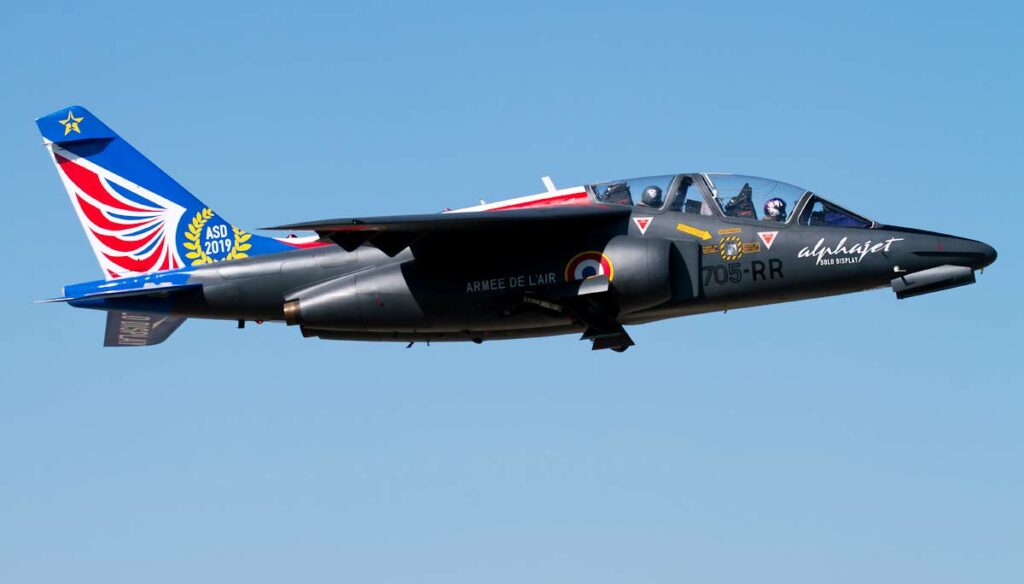
Socata TB-30 Epsilon
Description: The Socata TB-30 Epsilon is a single-engine trainer, mainly used for basic training. Its robust structure and ease of handling make it an ideal choice for the early stages of pilot training. With a maximum speed of 300 km/h, it offers a safe, controlled learning environment for new pilots. The TB-30 Epsilon features an advanced cockpit, enabling students to familiarize themselves with the systems and instruments used in more advanced fighter aircraft. Its ability to operate in a variety of weather conditions and its low operating costs make it a valuable asset for the French air force.
Benefits: Ideal for basic training, low operating costs, advanced cockpit.
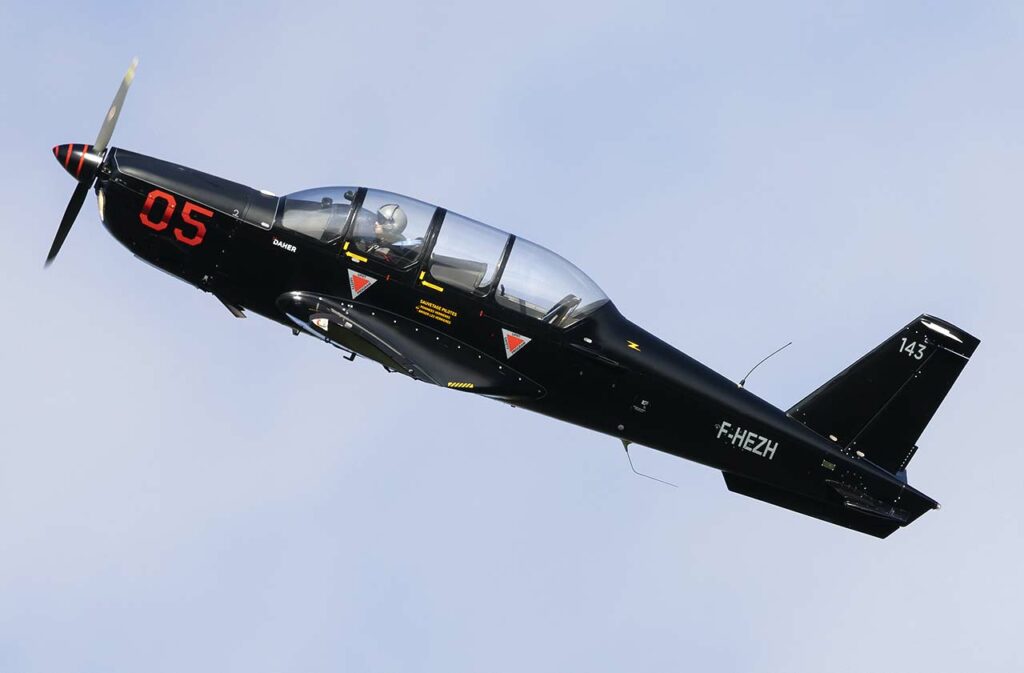
Pilatus PC-21
Description: The Pilatus PC-21 is an advanced trainer designed to bridge the gap between basic training and fighter aircraft. Featuring a powerful turboprop engine and an advanced cockpit similar to those of modern fighters, it offers an exceptional training platform. With impressive flight capabilities, such as a top speed of 685 km/h and excellent maneuverability, the PC-21 enables pilots to get used to fighter aircraft performance without the associated costs. It is also used for training in tactical flight techniques and advanced air operations, making it a crucial part of the pilot training curriculum.
Benefits: Advanced training, cost-effective, fighter-style cockpit.
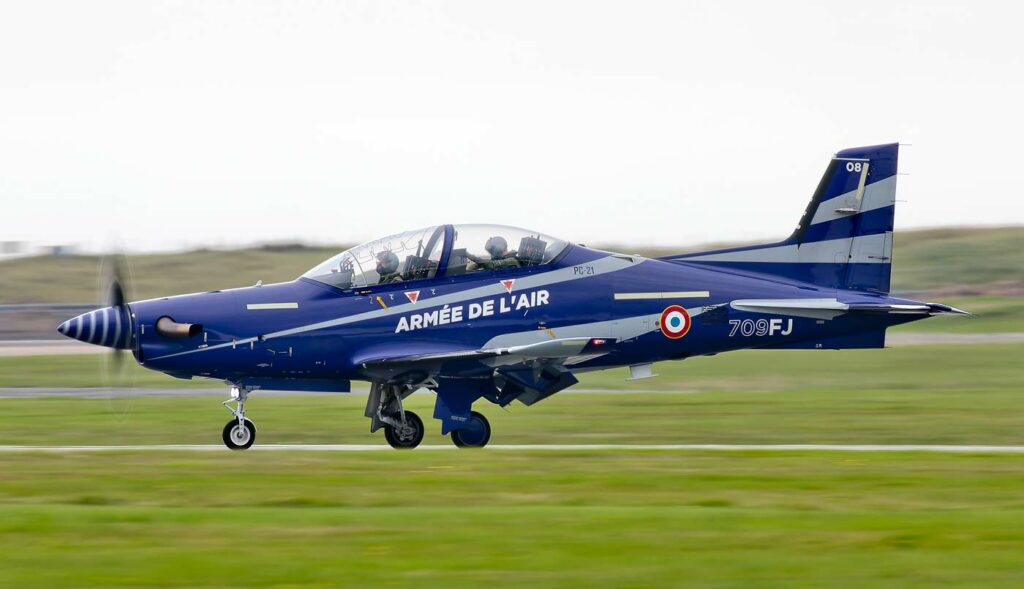
Extra EA-300
Description: The Extra EA-300 is an aerobatic aircraft used by the French Air Force to train pilots in extreme conditions. This single-seater aircraft, designed for aerobatic performance, enables pilots to develop a thorough understanding of flight dynamics and the limits of their aircraft. With its ability to perform complex maneuvers and exceptional responsiveness, the EA-300 is an invaluable tool for teaching pilots how to handle critical flight situations. Mastering aerobatic skills is essential for fighter pilots, enabling them to react better under pressure and maintain precise control in air combat situations.
Benefits: Mastery of flight in extreme conditions, development of advanced skills, exceptional responsiveness.
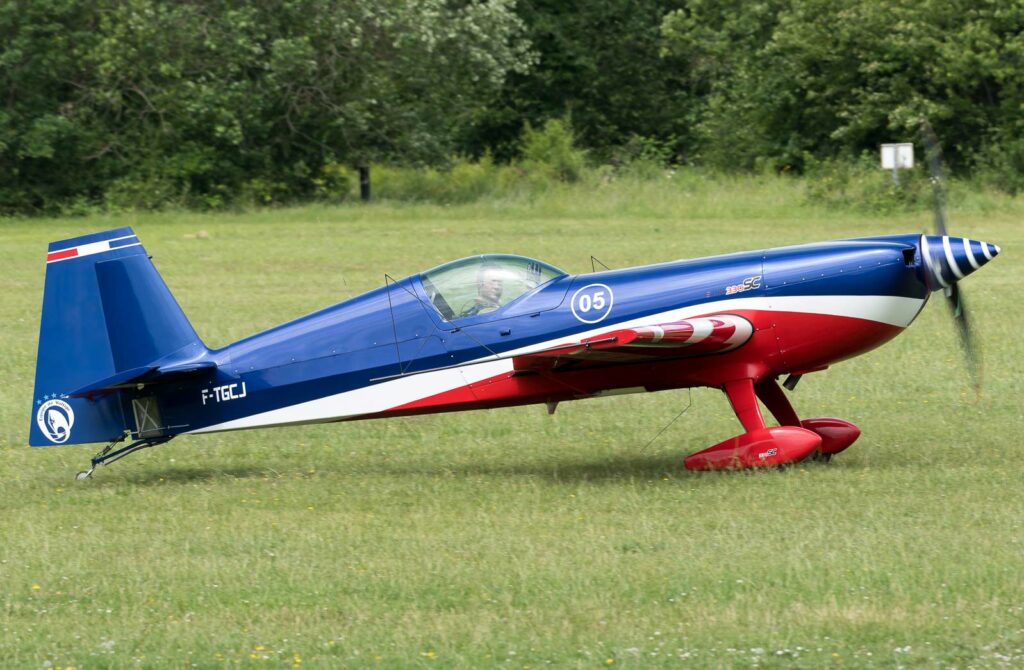
GroB G120A-F
Description: The GroB G120A-F is a two-seater trainer used for basic pilot training. Designed for safety and ease of use, it is ideal for the early stages of pilot training. With its robust structure and ease of maintenance, the G120A-F is a reliable tool for teaching the basics of flight. It also provides an effective platform for instruction in flight principles, basic maneuvers and emergency procedures. Its simplicity and effectiveness make it a fundamental part of the French Air Force’s training program.
Benefits: Ideal for basic training, safety, ease of maintenance.
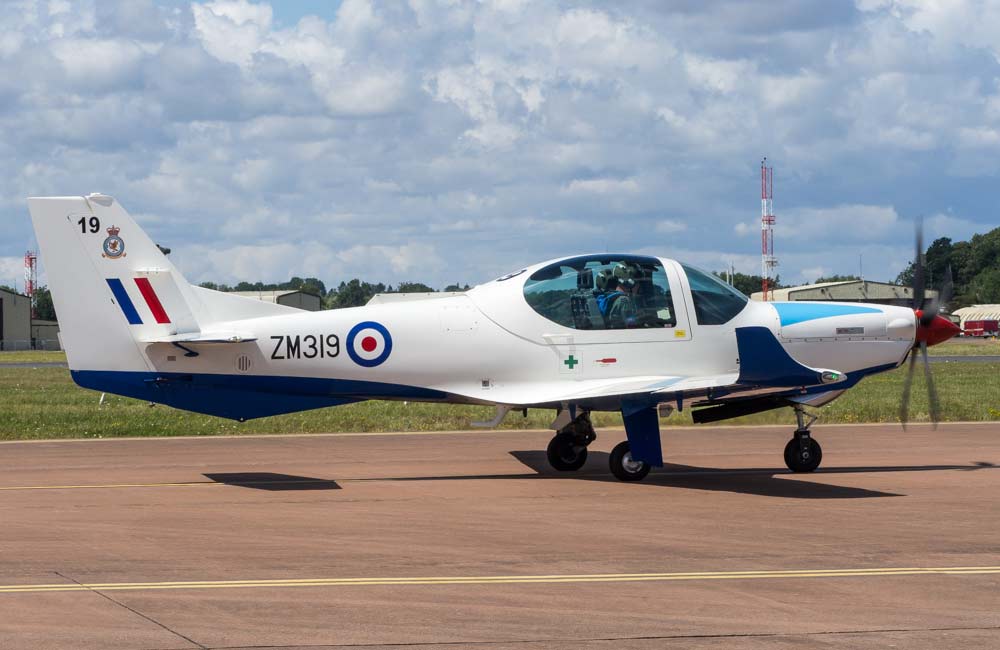
French Air Force training aircraft play a crucial role in preparing pilots for a demanding and varied career. Each aircraft, with its specific features and advantages, contributes to a comprehensive and sophisticated training program. By using these diversified aircraft, the French Air Force ensures that its pilots are among the most competent and versatile in the world, capable of handling a variety of missions and combat aircraft.
War Wings Daily is an independant magazine.